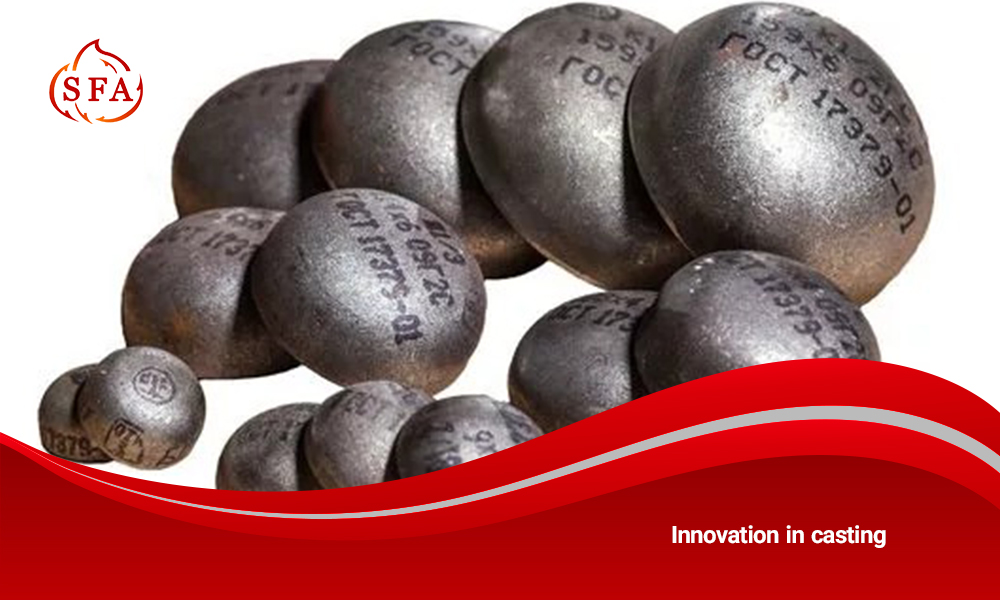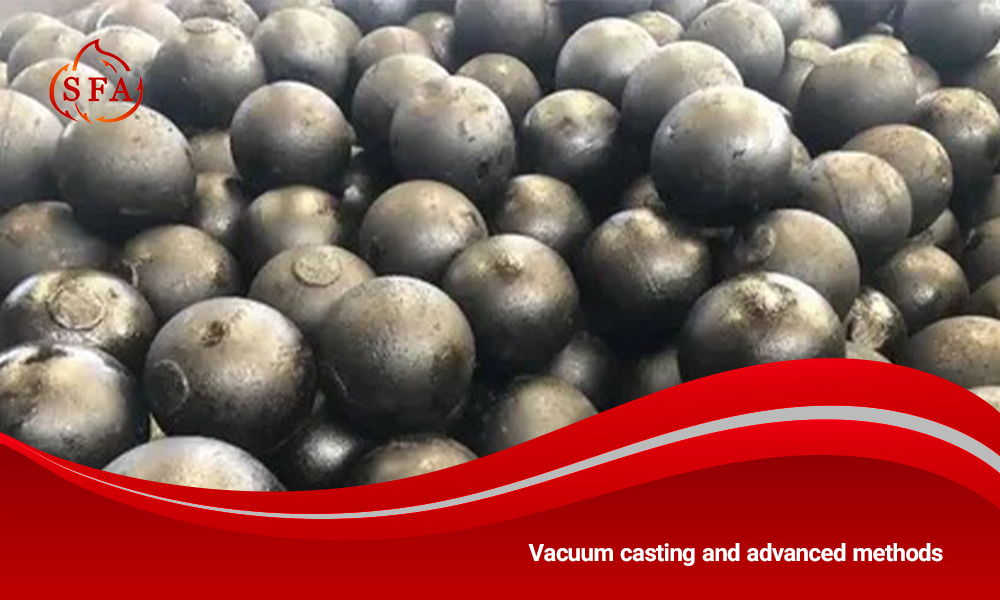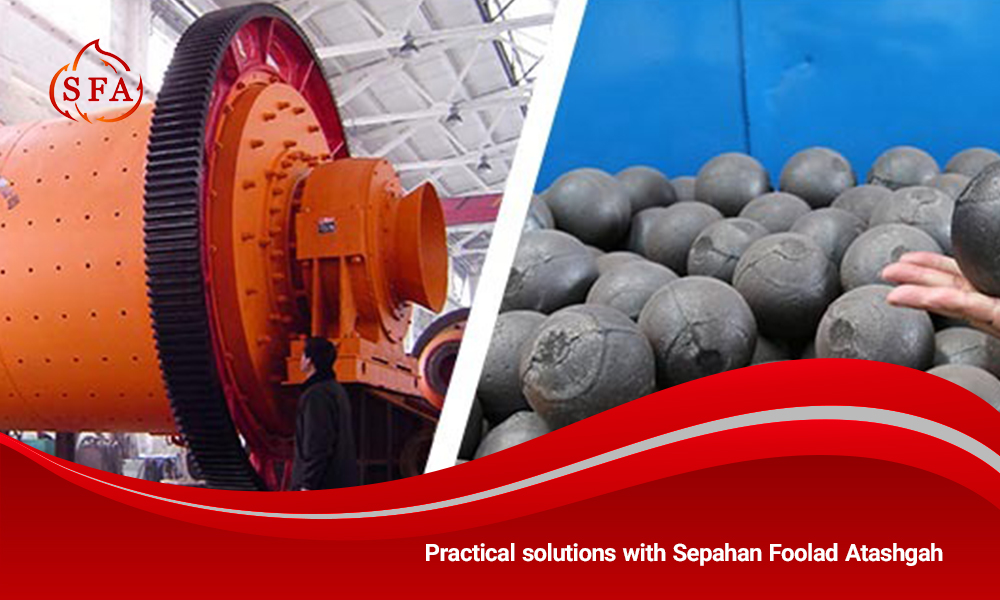

How Foundry Innovation Boosts Efficiency in the Mining Industry
The mining industry relies on the production and operation of heavy, wear-resistant components with high durability. The quality of castings such as crusher shells, grinding liners and mining pumps directly affects the efficiency and maintenance costs of mines. In recent years, innovation in casting, by utilizing advanced technologies, has brought about dramatic changes in the quality and productivity of mining components.
For example, the use of casting process simulation (CAD/CAE) can predict melt flow and cooling before the physical construction of the mold to optimize the location of the heels and melt inlets; according to a market analysis of the foundry industry, this method reduces the cost of producing defective parts by predicting and eliminating internal defects (such as porosity) and increases production capacity by reducing waste. In the following article from Sepahan Foolad Atashgah, key new technologies in modern foundry are introduced and then their impact on improving the efficiency of the mining industry is examined.
New casting technologies and their impact
Leading foundry companies are looking to use computer-aided design and simulation methods, 3D printing, advanced alloys, and intelligent automation to improve part quality and reduce waste. Some of the key technologies include:
Casting process simulation (CAD/CAE):
The use of simulation software allows for the virtual study of melt flow, heat distribution, and solidification before the mold is built. This reduces design errors and minimizes the production of ineffective test specimens. Studies report that the development of CAD/CAE methods in recent decades has significantly increased the quality of cast parts and shortened production cycles.
Additive Manufacturing:
Cementitious 3D printing technology allows foundries to produce complex molds very quickly. This method reduces the design time and cost of mold production. According to experts, the ability to quickly create custom molds with complex geometries with 3D printing has revolutionized the casting process. This application is especially useful for rapid prototyping and the manufacture of highly detailed one-piece parts.
Click to read the article «Innovative Casting Techniques for Mining Machinery».
Smart alloys and materials:
Advances in metallurgy have increased the strength and hardness of aluminum and magnesium alloys by adding nanoparticles. These “nanostructured alloys” significantly increase wear and fatigue resistance while making them lighter. For example, adding ceramic nanoparticles to the melt could extend the life of mining wear parts while reducing the final weight of the part. Future research will also focus on sensors and self-monitoring capabilities of cast materials to create parts that can respond to environmental conditions.
Vacuum casting and advanced methods:
Processes such as vacuum casting prevent gas from entering the melt, resulting in smoother parts, higher dimensional stability, and greater mechanical strength. Leading companies are using advanced casting methods such as vacuum die casting to produce lighter and stronger parts. According to a mineral casting manufacturer, the use of vacuum casting increases dimensional accuracy of parts and reduces energy consumption in production.


Automation and digital monitoring:
The use of robots and digital systems in casting lines makes production quality uniform and reduces defects. For example, a long-standing foundry company has announced that by maximizing the automation of casting lines and implementing digital quality control systems, it has eliminated many errors and improved the quality of parts. Also, continuous monitoring of process parameters (melt temperature, chemical composition, etc.) helps to optimize energy consumption and reduce waste.
Table: Comparison of modern casting technologies and their key benefits in the mining industry
| New technology/method | Key benefits in the mining industry |
| Simulation (CAD/CAE) | Reducing errors and test iterations, optimizing molds, increasing part quality |
| 3D printing of molds | Rapid manufacturing of complex and custom molds, reducing production time and cost |
| Advanced (nano) alloys | Increasing the strength and wear resistance of parts, reducing the weight of components |
| Vacuum molding and new methods | Producing parts with high dimensional accuracy, improving the surface of parts and reducing internal defects |
| Automation and smart monitoring | Production uniformity, reduction of waste and errors, saving labor and energy |
Further explanation
The use of Innovation in casting technologies directly increases the efficiency of mines. For example, by improving the design of molds (through simulation and 3D printing), defects such as porosity and cracks in bulk mineral parts are reduced. Also, the use of resistant alloys and precise temperature control increases the hardness and wear resistance of parts such as mill liners and crusher blades; as a result, the life of these parts is significantly increased and the number of stops for repairs is reduced.
For example, mining equipment manufacturers have reported that precision casting of grinding balls with uniform sphericity and hardness reduces maintenance costs and increases crushing efficiency. Also, the use of vacuum casting technology to manufacture mineral pump shells or sensitive gearbox parts allows the production of lighter and more precise parts, which leads to energy savings in subsequent stages. The sum of these innovations shortens production cycles and significantly reduces the costs of mining projects.
Additionally, mining organizations can accelerate the development process of new parts by leveraging technologies such as 3D printing and simulation. According to the study, the integration of modern technologies into casting lines has enabled the mining sector to produce complex parts faster and at lower cost, thereby improving “industrial competitiveness and sustainability.”
Practical solutions with Sepahan Foolad Atashgah
Sepahan Foolad Atashgah Company, as one of the leading manufacturers in the field of industrial and mining castings, has been able to gain a special position in the domestic and international markets by relying on world-class innovations and utilizing Innovation in casting technologies. With advanced production lines, modern melting furnaces, and a team of metallurgical experts, this complex is able to produce a variety of parts required by the mining industry, including mill liners, mineral pump shells, rock breaker hammers, and steel balls, with high quality and long durability.
Sepahan Foolad Atashgah’s competitive advantage is its focus on custom design and engineering support, so that each mining project can receive its special parts with the highest standards. Also, with its strict quality control systems and extensive after-sales service, the company ensures that its customers, in addition to reducing maintenance costs, enjoy higher productivity of their extraction and processing lines. Choosing Sepahan Foolad Atashgah means access to sustainable, reliable and economical solutions in the mining industry. For more information and specialized advice, contact the experts and CEO of Sepahan Foolad Atashgah to experience a confident purchase.


Conclusion
Technological developments in the foundry industry mean qualitative and economic improvements in the mining sector. The use of Innovation in casting methods such as advanced simulation, 3D printing, smart alloys and automation has led to improved manufacturing accuracy, increased durability of mining components and reduced waste. These changes not only increase the useful life of mining equipment, but also reduce costs and repair times and improve the security and sustainability of the supply chain. Given the increasing global demand for metals and mineral products, future innovations in foundry (including emerging materials and smart systems) are expected to play an increasingly important role in improving the productivity and sustainable development of the mining industry.


